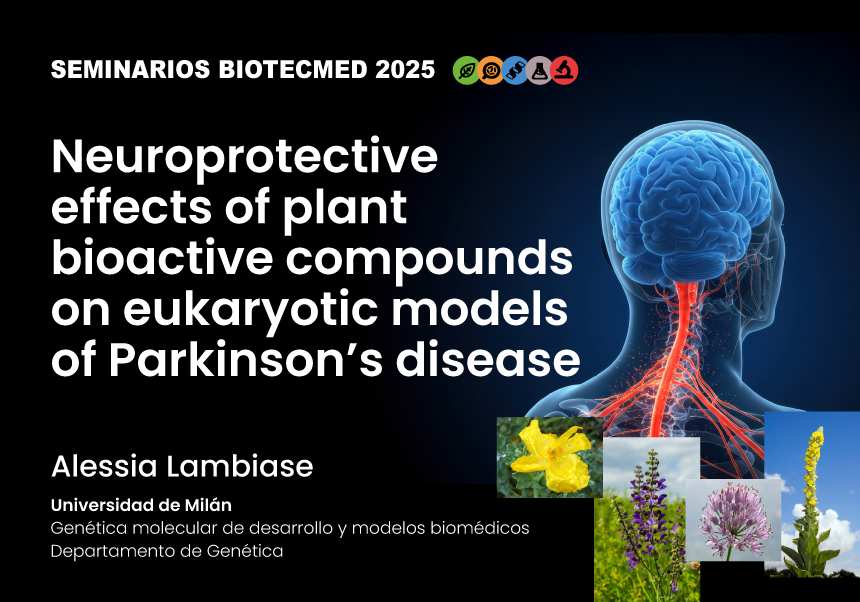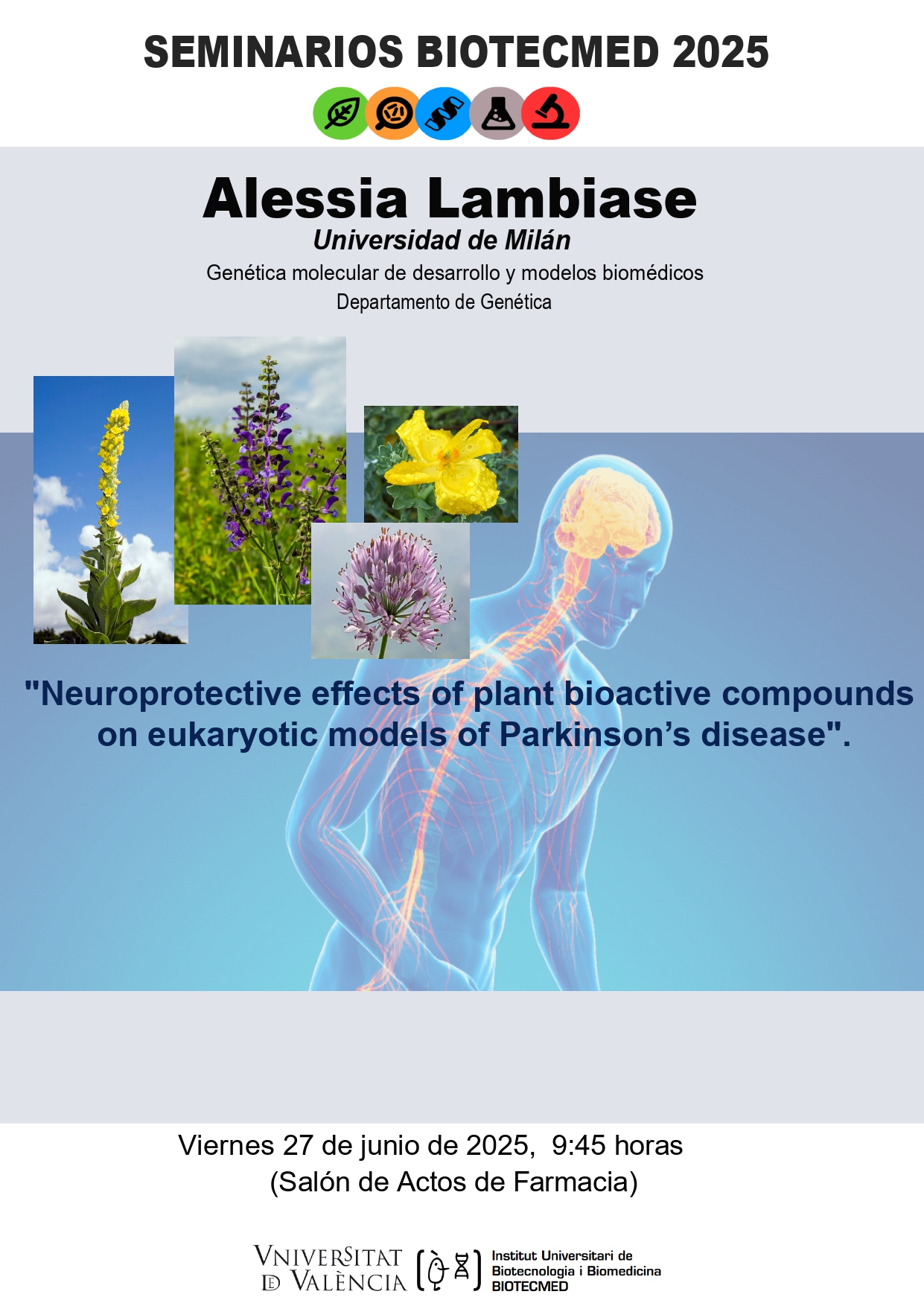
On Friday, 27 June at 9:45am will be held the last conference of the course before summer break, given by Alessia Lambiase, doctoral student residing in the group Molecular Genetics of Development and Biomedical Models.

On Friday, 27 June at 9:45am we’ll have the last conference of the course. Since the Day of Conferences of the Institute is on 11 July, the remaining conferences will be moved to September and will open the new season.
In this case, it will be given by Alessia Lambiase, doctoral student residing in the group Molecular Genetics of Development and Biomedical Models, directed by Nuria Paricio, under the title:
"Neuroprotective effects of plant bioactive compounds on eukaryotic models of Parkinson’s disease". Alessia comes from the University of Milan. The conference will take place at the Assembly Hall of the Faculty of Pharmacy at 9:45am.
Abstract:
Aging and age-related neurodegeneration represent major challenges in modern medicine. Parkinson’s disease (PD) is the fastest growing neurological disorder worldwide and is strongly associated with the misfolding and aggregation of the α-synuclein protein. Plants have long been recognized as a valuable source of bioactive compounds with potential applications in human health, including neuroprotection. One of the key aims of the National Biodiversity Future Centre (NBFC) is the valorization of Italy’s rich plant biodiversity. In this context, 64 endemic Italian plant species were screened to identify novel neuroprotective compounds targeting α-synuclein aggregation, a central pathological feature of PD. Extracts from Allium lusitanicum, Salvia pratensis, Verbascum thapsus, and Glaucium flavum showed strong anti-aggregant activity in yeast models, SH-SY5Y neuroblastoma cells and in vitro assays. Mass spectrometry analysis identified verbascoside as the principal active compound in V. thapsus, capable of directly binding α-synuclein and preventing the formation of toxic oligomers. Additionally, in collaboration with the “ON Foods” NRRP project, the neuroprotective potential of Glycyrrhiza glabra leaves, an agro-industrial by-product, was explored. Among its bioactive constituents, pinocembrin demonstrated particularly promising effects. Both verbascoside and pinocembrin are currently under investigation in a Drosophila melanogaster PD model to assess their efficacy at the organismal level and support their potential for PD prevention or treatment.
Os esperamos
.png)






